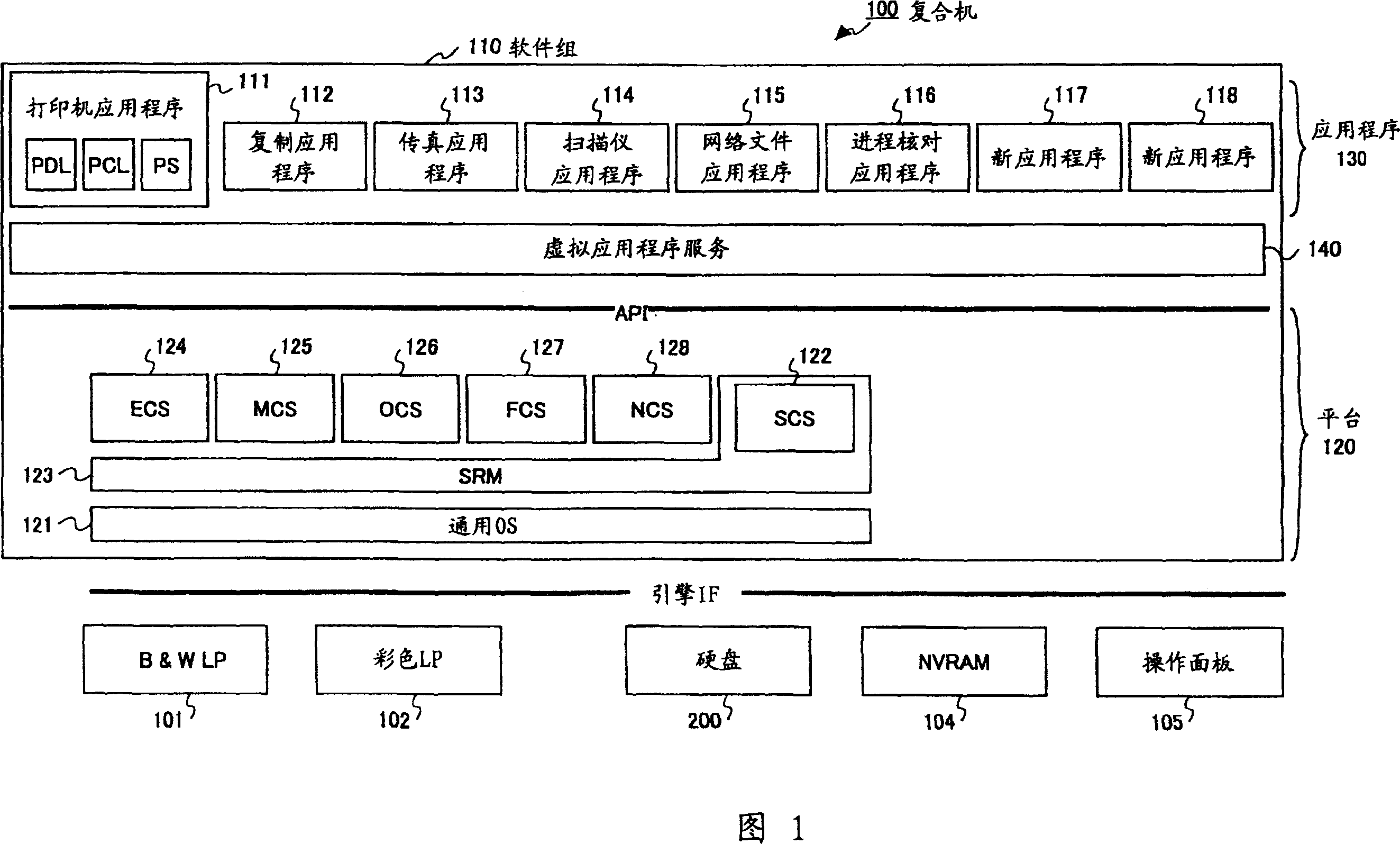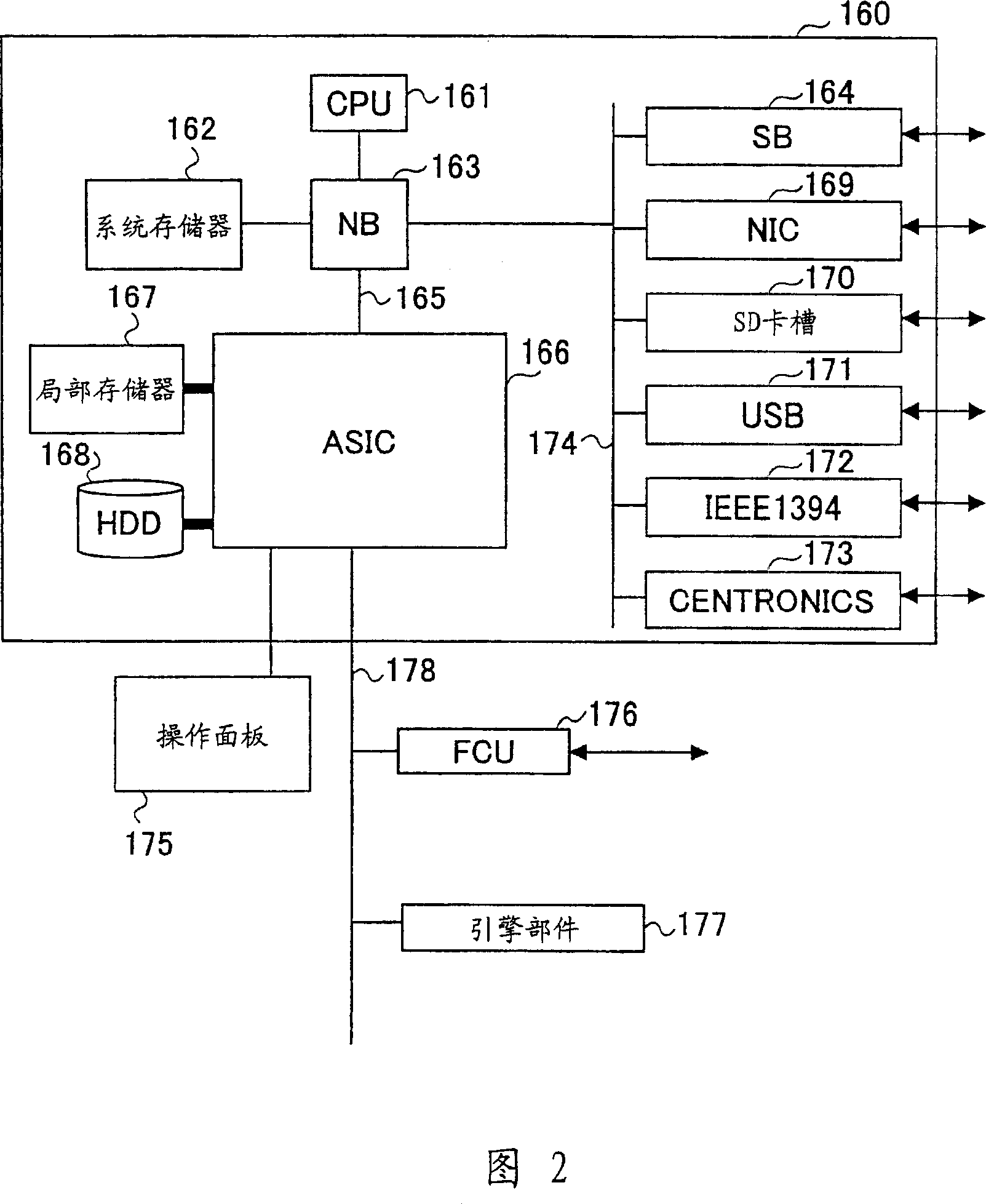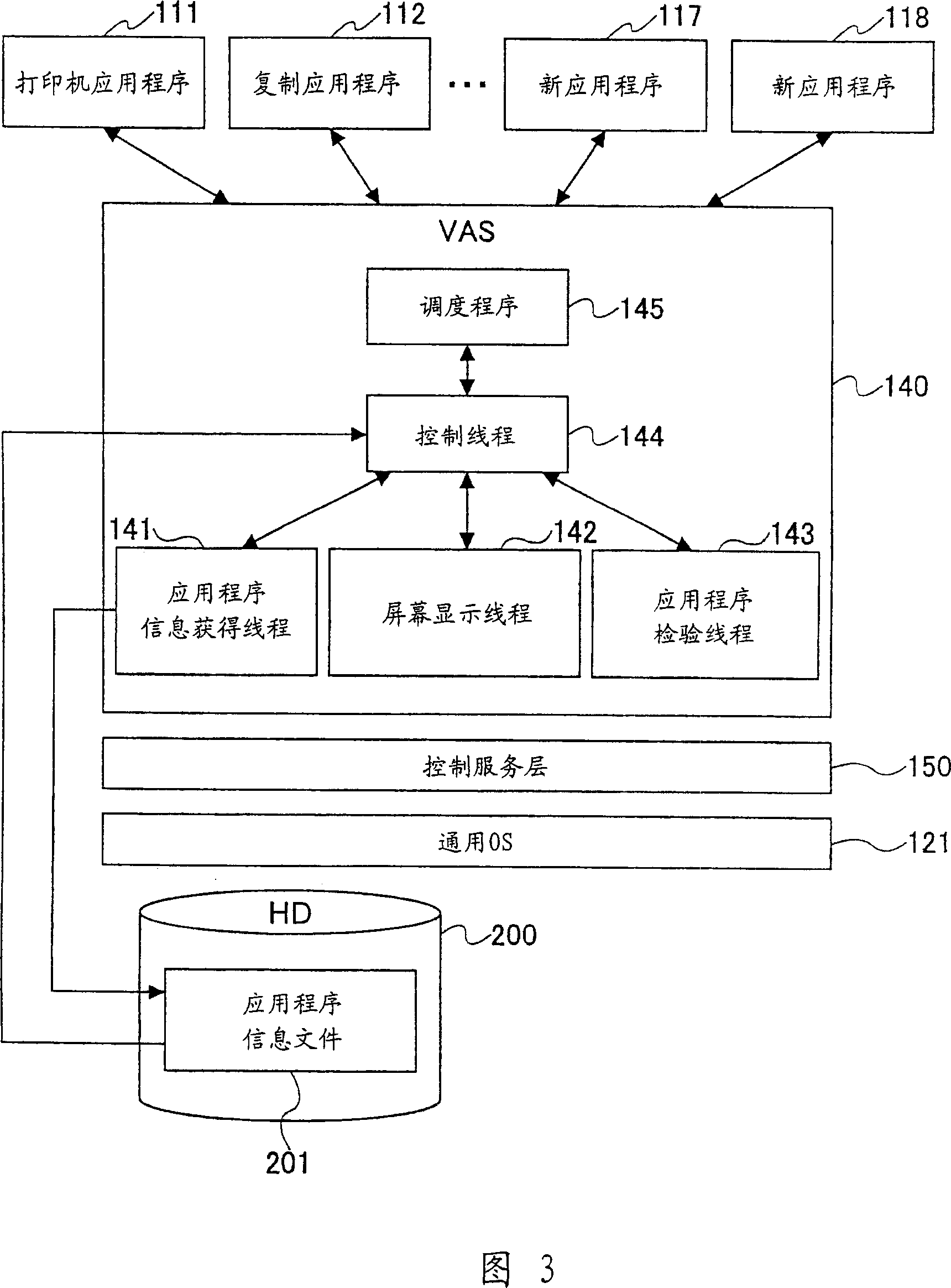Image forming apparatus and method, program and computer readable medium
An imaging device and program technology, applied in image communication, electrography, optics, etc., can solve the problem that it is difficult to determine the priority of application programs, and achieve the effect of stable operation
- Summary
- Abstract
- Description
- Claims
- Application Information
AI Technical Summary
Problems solved by technology
Method used
Image
Examples
no. 1 example
[0076] Fig. 1 is a block diagram of an image forming apparatus (hereinafter referred to as a compound machine) according to a first embodiment of the present invention. As shown in FIG. 1 , the compound machine 100 includes hardware resources and a software group 110 . Hardware resources include a black and white line printer (B&W LP) 101, a color laser printer 102, and hardware resources 103 such as a scanner, a facsimile, a hard disk, memory (RAM, NV-RAM, ROM, etc.), and a network interface . The software group 110 includes a platform 120, an application program 130, and a virtual application service 140 (hereinafter referred to as VAS).
[0077] The VAS 140 works as a client process for control services and operates as a server process for applications. The VAS 140 obtains the application program information before executing the installation process to make the application program executable in the multifunctional machine. Then, the VAS 140 generates an application infor...
no. 2 example
[0124] In this embodiment, an example of a screen displayed by the screen display thread 142 can be described in more detail.
[0125] 9-36 show state transitions of the operation screens displayed on the operation panel 105. As shown in FIG. Figure 9 shows the verification screen of the initial setup screen. Figures 10-16 show screens for file copy operations. Figures 17-28 show the screens used for installation operations. Figures 29-36 show the screens used for the uninstall operation.
[0126] In the authentication screen shown in Figure 9, enter the user ID and password. After entering them and pressing the OK button 210, the desired mode can be selected. In this embodiment, the application program is copied in the multifunction peripheral 100 before the application program is installed. As shown in FIG. 10A, a file copy screen is displayed, and a storage location of a file to be copied is selected. In this embodiment, the destination can be selected from the memory...
no. 3 example
[0147] Hereinafter, a third embodiment will be described. The functional structure of the compound machine 100 of the third embodiment is the same as that of the first embodiment. That is, the functional structure of the compound machine 100 of the third embodiment is as shown in FIG. 1 .
[0148] Regarding general-purpose personal computers, if a plurality of application programs are run one by one, there is a possibility that the PC hangs due to lack of resources. On the other hand, with the compound machine 100 of the present invention, pre-installed applications such as copy applications cannot be suspended.
[0149] However, since the compound machine 100 can install a new application developed by a third vendor or user, there is a situation where resource shortage occurs when execution setting for a new application is performed if a plurality of applications have already been set to run. .
[0150] When the electric compound machine 100 is powered, "execution setting"...
PUM
 Login to View More
Login to View More Abstract
Description
Claims
Application Information
 Login to View More
Login to View More - R&D
- Intellectual Property
- Life Sciences
- Materials
- Tech Scout
- Unparalleled Data Quality
- Higher Quality Content
- 60% Fewer Hallucinations
Browse by: Latest US Patents, China's latest patents, Technical Efficacy Thesaurus, Application Domain, Technology Topic, Popular Technical Reports.
© 2025 PatSnap. All rights reserved.Legal|Privacy policy|Modern Slavery Act Transparency Statement|Sitemap|About US| Contact US: help@patsnap.com



